Welcome to Screen Week! Join us as we explore the films, TV shows, and video games that kept us staring at screens. More from this series
Just as it’s difficult to pinpoint what truly defined 2016 overall, the same goes for film. In 2013, as we pointed out, shit got real. So, one year later, we escaped. Thus, the social outsider grew. And the social outsider didn’t go away. Shit got real again, but this time, perceptions in reality clashed with another. Citizens escaped into validating takes and talking points. Divisions widened. Murderers, as ever, came with smiles. The social outsider’s definition became elastic. Depending on where you stood, you may have been that social outsider and were judged harshly for it. All the while, tests getting put out for agility, strategy, and luck. If you survived them, if you made the right moves, you were powerful enough to survive anything. And if there’s a common thread through 2016, particularly our own list of 30 films, it’s just that: survival.
Unless you’re in a cultural elitist bubble like myself, cinema must be pretty boring. Very few of the films on our list were met with dump trucks full of cash, but let their inclusion serve as a reminder that the mainstream does reward intelligence. There’s a lot of good shit on our own screens at home. People want something different — they’re just not required to get it themselves. So it goes. Luckily, some studios continue to be as reliable as record labels — the A24s and Drafthouses offered dazzling singular experiences that didn’t waste their meager budgets. Amazon could offer you auteurs after you order kitty litter and Ecto Cooler. Even as budgets shrank, the best films of the year knew how to play, often in ways that were flat-out absurd. Be it a nudist awakening and a set of teeth in Toni Erdmann or delusions of an introvert’s lost life scored by farts in Swiss Army Man, the worlds presented were just as unfair as our own. But they were also, in a way, strangely optimistic in how to deal. As though lit up by what was at stake, filmmakers stopped taking it for granted, and the reliable auteurs — Villeneuve, Verhoeven, Refn — brought their A-game. As the mainstream order remained largely conservative and derivative, chaos and confusion prospered. The old guard fought the new wave. In this context, the world was unarguably better for it.
One film that didn’t make the cut, Jake Paltrow and Noah Baumbach’s ode De Palma, reminds viewers how vastly different cinema has become in the latter half of its century-long existence. It takes an outsider, for sure, but we learned this year that the approach of the social outsider doesn’t need to be one of nihilism and terror. As you’ll see in our top 5, the notion that the marginalized can prosper, even in the smallest of triumphs, took our collective breath away. Respect was dealt and earned. Hell, even if your nerdy ass never dug jocks, Everybody Wants Some!! made it possible for at least two hours. Women of the year, through different centuries and some of the nasty persuasion, grabbed back. Companionship was found in the most bizarre and wonderful ways. Even if our personal or political narratives didn’t succeed the same way, we could still be fired up; we know plenty of radical-leaning people inspired by something as half-baked as Rogue One. We’ll take what we can get.
30
Paterson
Dir. Jim Jarmusch
[Amazon Studios]

In Jim Jarmusch’s film Paterson, a man named Paterson who drives buses in the city of Paterson, NJ, writes poetry in his spare time and is obliquely inspired by the book-length poem by William Carlos Williams called Paterson. This Patersounds like a very bad Pateridea. At least it might to those unfamiliar with William Carlos Williams’s poem: despite being inspired by Ulysses and Pound’s Cantos, his ode to Paterson, NJ is accessible, ordinary, and nearly prosaic save some lingering moments of illuminated mundanity. Jarmusch’s film, the same. Paterson captures the work of creating poetry, work that is — for many — markedly unpoetic. Adam Driver’s Paterson (his most subtle performance — not like there’s competition) is content, not troubled; we see him observing his own blue-collar work routines and tranquil family life with his affectionate wife Laura (Golshifteh Farahani), who flits from hobby to hobby, and his dog Marvin (Nellie), who he walks every evening as an excuse to secretly (his wife knows, and he knows she knows) have one beer alone at his neighborhood bar. As a sort of trantricly muted climax, Marvin eats Paterson’s only copy of his work. Then, he starts writing again. The most famous line from Williams’s Paterson is, “No ideas but in things.” Jarmusch’s film is full of such concreteness, using a literal, unadorned filmic language. Presently, this straightforwardness seemed important. Paterson kept going, without a struggle.
29
The Sky Trembles and the Earth is Afraid and the Two Eyes Are Not Brothers
Dir. Ben Rivers
[Artangel]

Wherein UK multimedia artist Ben Rivers delivered another obtuse, slow-motion triptych even more expansive and hypnotic than his last obtuse, slow-motion triptych (the 2014 Ben Russell collab A Spell to Ward Off the Darkness). This time, Rivers paid tribute to a vision of Morocco that has historically resided mostly in the mind’s eye of legendary polymath/(relatively) benign colonialist Paul Bowles, even going so far as to dedicate one third of the film to a freewheeling update of the classic Bowles story “A Distant Episode.” Hazy and heavy-loping, it was the sort of film in which one could easily get fully lost, a time-bending jeep ride through unfamiliar terrain. In other words, it was trippy as fuck, but leave the hallucinogens in your mom’s underwear drawer: Rivers had you covered sans controlled substances and managed as much with nary a stock “psychedelic” trope in sight.
28
The Pearl Button
Dir. Patricio Guzmán
[Atacama]

Since the beginning of the modern state, the relationship between politics and metaphysics has become increasingly contentious. Unanswerable questions are too often seen as suspect. Suspects, meanwhile, are too often seen as guilty. In the end, suspect questions — and people — are silenced, vanished. Virtually every tyranny of the 20th century bore witness to this reality. For example, in 1970, Chileans elected a man who would dare to question the evil of economic imperialism. In the United States, economists and analysts would then ask, “But how, now, might we develop Chile into a malleable state?” The unspeakably painful answer would become the subject of nearly all of Patricio Guzmán’s astounding films. Following Nostalgia for the Light, The Pearl Button continues to call out, like Job, the question of pain — and of reconciliation — into the seemingly infinite. On the one hand, there is no answer. On the other, it is not at all infinite. Along the world’s longest coastline, a remnant was discovered — a button. From a remnant unravelled the story of a people. The present spoke to the past, and the past to the present. In so much space, the disappeared reappeared. Beyond the stripped-down facts of the modern state’s brutality is a glimmer of hope in the water. A question rediscovered.
27
Lo and Behold: Reveries of the Connected World
Dir. Werner Herzog
[Magnolia]

“Because the internet” is a sort of trembling, isn’t it? We often hide our existential overwhelm about infinite screen permutations of information and mis-information (which now reveals, or informs on, itself with a nihilistic shrug). We dismiss and diminish with pithy appraisals, momentarily reducing the vast phenomenon into a sort of eye-roll-inducing gimmick. With characteristic wanderlust, Herzog considered our increasingly complex, module-based existence with a refreshing disregard for the mundaneness of adaptive ambivalence. Whether a chapter explored people online trying to cure cancer or traumatizing a family with vicious trolling, Lo and Behold was neither damning nor cold nor distant, as the director’s work is often mischaracterized. With his unmatched mix of stoicism and honest, unforced emotional asides, things were allowed to happen outside of the Q&A rhythm, be they awkward or endearing (or both). It’s sprawlingness may’ve been intimidating, but it was a film for grappling, not elucidating, and Herzog’s instincts are still sharp enough for a hearty wander. The ubiquitousness of the internet casts a vast shadow over our dismissive objectification of it, and Lo proved a novel place to reckon with this.
26
The Alchemist Cookbook
Dir. Joel Potrykus
[Oscilloscope Laboratories]

A lesson from 2016: Don’t try to predict Michigan (my adopted state). Director Joel Potrykus blew us away with 2014’s Buzzard, a film with such a perfectly idiosyncratic kind of dirtbag comedic sensibility, I thought that I had the grimy genre that Michigander Potrykus had carved out for himself pegged. Then, this year, The Alchemist Cookbook came out: a refined piece of cult horror that observed trailer-dwelling Sean’s (Ty Hickson) isolation (there’s also a cat and one other character) in the Michigan woods as he tries to make gold out of batteries and shit. This film should not really exist (neither should Anti-Birth, the other unclassifiable film set — but not, like this one, also filmed — in Michigan this year). Played for both realism and humor are the Michigan touches we saw in Buzzard — Doritos and pop — but also a pivotal reference to Sleepaway Camp I think and the conjuring of Satan. Despite that thematic matter, though, the look nearly convinced me I was watching Michael Haneke’s follow-up to Caché. Was it a parable about how entrenched American materialism’s tentacles are on our alt-iest of citizens? A dismantling of myths of rugged self-sufficiency? Just terrifying horror done weird? Even Nate Silver doesn’t know, but I heard that he predicts with overwhelming odds that Potrykus will continue to meet our expectation to be defied.
25
Tickled
Dir. David Farrier & Dylan Reeve
[A Ticklish Tale]

Tickled was not an exposé on any sort of large-scale conspiracy. Cheese pizza and the supernatural were not involved. Instead, Tickled revealed a more common form of abuse, what Joe South might have called “The Games People Play.” One man, not the Illuminati, playing games, small games, but big enough to make life difficult for its participants, their innocence exploited, not for profit, not for kink, but for small-scale power, for psychological kicks. It took very little to cause damage. Although it was hard not to laugh, it was torture — harassment, abuse, extortion, tickling — not at the inquisition level, but at the domestic level, behind closed doors and blinds; domestic terror, green alert. Which got us thinking: if the strange yet seemingly innocent world of competitive tickling was not what it seems, what else is not what it seems? What’s actually going down at that skeet competition? Or in the basement of that pizza shop? At that quilt festival? And what about that chili cookoff down in Terlingua?
24
Knight of Cups
Dir. Terrence Malick
[Broad Green]

Terrence Malick has now released as many films in the past five years as he did in the previous forty, and our relationship with the enigmatic director has shifted. His motifs, often inscrutable but instantly recognizable, are now a yearly occurrence, as present as the litany of car and phone commercials aping his style. With this in mind, Knight of Cups, already a semi-autobiographical piece, comments on itself and its creator. As Christian Bale’s Rick stumbles half-dazed through the beauty and luxury of Los Angeles, of his partners, of pensive moments, the viewer wonders how their version of the protagonist’s journey would be different. What would we feel in his life; could we possibly be so jaded? The tarot card chapter headings invoke fate, though the narration seems to be recalling, as if divining one’s own past. A dreamy state where direction is unclear and rhythm is everything. Malick’s world, and we’re deep into it. Are we being pummeled by navel gazing and gorgeous imagery, or are we boring toward the core of the artist’s vision? With time, we’ll see the shape of this stage in the oeuvre more clearly, but for now, Knight of Cups remains an exploratory work, rich with thoughtfulness and mystery.
23
Kubo and the Two Strings
Dir. Travis Knight
[Laika]

When you get past Charlize Theron voicing a monkey, you stop acting like the dumb adult you are. When it comes to yearly animation strongholds, Zootopia and Moana made me experience wonderment through an adult lens. Kubo and the Two Strings made me feel like a child watching a memory maker in a special time and place, outside of myself. There is no suspension of belief needed when one-eyed Kubo plays his shamisen, making origami come to life in vivid storytelling. The magical world of Kubo is child logic. It’s pure imagination without the expected Pizza Planet easter egg or pop culture reference or Justin Timberlake dance number. Laika once again proves they are the humbled and inspired underdog. Kubo’s journey is at its core a child looking to be reunited with his family. The animation is so dreamlike and wavy that you feel closer to the action and emotion that Kubo experiences. Kubo may lose out to the mouse when it comes to the gold man, but this is the type of film that truly digs deeper into your heart and psyche. Oh, and Matthew McConaughey voice a beetle. Alright, alright, alright.
22
A Bigger Splash
Dir. Luca Guadagnino
[Fox Searchlight]

A quartet of brave, masterful performances anchored this sumptuous and tense portrait of ennui and rage among the beautiful people. Comparisons to Antonioni were inevitable, but we were also reminded of Paolo Sorrentino’s studies of aging, jealousy, and soulless debauchery. Unlike The Great Beauty and Youth, however, A Bigger Splash didn’t buckle under its pretensions, turn maudlin, or succumb to awkward fits of magical realism — it was also a hell of a lot more fun. Ralph Fiennes stole the show with his spastic Jagger-like dance moves and his leering, predatory gregariousness (the polar opposite of his other great supporting role this year in Hail, Caesar!) and Tilda Swinton perfectly balanced radiance and exhaustion, strength and dependence as a Bowie-esque superstar taking an extended sabbatical following vocal cord surgery. Guadagnino’s direction was smart and nuanced, shifting gears between fluid and jumpy, flashy and restrained, always holding just a little something back. The high wore off in the final act, however, as the real world — the world of death and consequences — finally encroached upon their charmed, cloistered idyll. And unlike the snakes and geckos that trespass upon their impossibly gorgeous Italian villa, those problems cannot be blithely discarded. An unexpectedly affecting and sometimes chilling love square, intelligent and unvarnished while remaining carnal and raw. Beauty has rarely been so ugly, and vice versa.
21
Weiner
Dir. Josh Kriegman & Elyse Steinberg
[Sundance Selects]

Despite the rubbernecking quality of this doc of unprecedented access (and it is undeniably a hoot in this regard), what really stunned about this film was how effortlessly engrossing it was as drama. The filmmakers and their subject seemed to be struggling for tone together, and the way that things spun out was palpably tragic, even as Huma’s gameness about the experiment falls away and her side of things becomes harder to know. Our protagonist was eminently watchable: an unpredictably malfunctioning blender of affability, braggadocio, soul-searchingness, hokey humor, and infectious urgency. His libido and the decision making around it was something, even in his open contrition, that remained a confounding mystery. In the end, as we saw him seeing us seeing him, his raw limo outburst felt like a “how’s this for an ending?” answer to that awareness. Having witnessed key moments in the breakup of his family and the disastrous end of his political career, Antony Weiner’s battle-torn narcissism was the last lingering filament of possible redemption. And watching it snap, we couldn’t help but sigh with him.
20
Love & Friendship
Dir. Whit Stillman
[Amazon Studios]
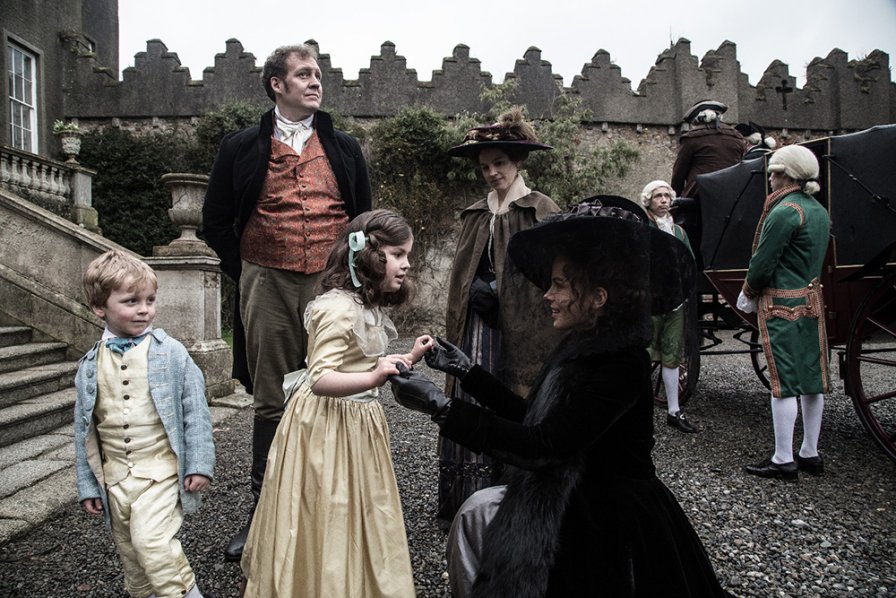
In Whit Stillman’s first film (1990’s Metropolitan), the chronicler of the American urban haute bourgeoisie directly mentioned Jane Austen in such a way to make it readily apparent how much influence the author would have on his career. The cherished British novelist was something of a throughline in the four films that preceded this one, and nearly two decades ago, Stillman expressed an abiding desire to adapt one of Austen’s lesser-known works. This year, we finally got to see what he’d do with source material from one of the most overdone authors in cinematic history. A lofty undertaking to be sure, what really floored us about Love & Friendship (adapted from an epistolary novella of Austen’s called Lady Susan) was its energetic humor, pacing, and irreverence, particularly on display in the gut-busting performance of Tom Bennett as a blithering suitor to both Kate Beckinsale and her daughter. Stillman’s directorial choices and Austen’s witty sensibilities regarding social mores dovetailed so seamlessly that the resulting film felt like neither a period piece nor an adaptation — it captured the joy and playfulness that are usually the very first things to go when production commences on one of the countless adaptations of her work. Who knew Austen could be so fun?
19
The Neon Demon
Dir. Nicolas Winding Refn
[Amazon Studios]
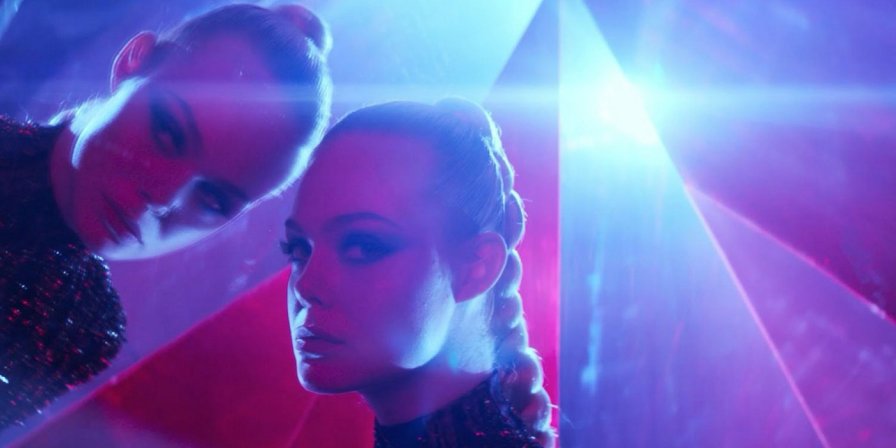
Only one luminous, musically-textured ode to Hollywood warmed my heart in 2016, and Gosling’s piano-acting was nowhere to be found. Call it a perfume commercial à la Argento, a Vogue issue edited by Bret Easton Ellis, whatever — The Neon Demon chomps hard at “fresh off the bus” apocrypha. Although not novel — Elle Fanning, bloodied and glittery like a Nihilisa Frank nightmare, seems doomed from the start — Refn’s candy-flipping slasher actually bothers to flesh out warnings spouted to all showbiz hopefuls. You’ve heard of models being vampiric, of fetishizing ghosts, of chewing up and spitting back out: it’s here, and it doesn’t hold back. Following the visually tasty nihilism of Only God Forgives, Refn only cranks the empathy a smidge. His objective here is sick glee; with its dedicated camp (he’s finally attempting the likeness of Andy Milligan/Paul Morrissey), it’s his funniest film in years. And when mortuary cosmetologist Jena Malone spits on a cadaver’s tongue during a passionate sex scene, I stood up and cheered.
18
Swiss Army Man
Dir. Daniel Kwan & Daniel Scheinert
[A24]
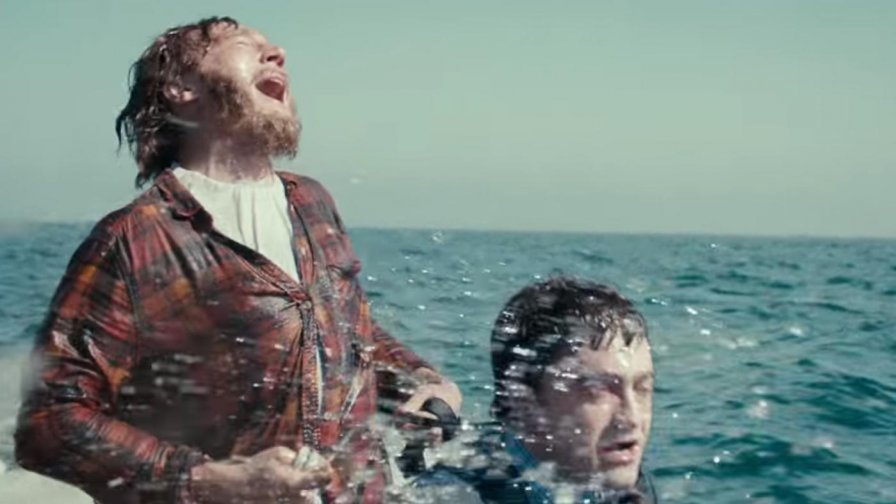
Swiss Army Man was easily misconstrued and dismissed as “that farting corpse movie with Harry Potter.” On the surface, yes there are lots of farts, and boners, and similar “low brow” type elements; however, they were all in service of painting a rich tapestry about finding companionship and revealing our intimate selves to each other. A touching story that straddles the line between the platonic and the romantic, between madness and inspiration, between the juvenile and the profound, the Daniels crafted a film about accepting oneself despite all of the things that make us feel weird or gross or alone. Powerful performances by Paul Dano and Daniel Radcliffe propelled this story of two souls finding each other in a sea of trouble and loneliness and rediscovering what it means to be human and to be loved. It was easy to neglect the film because of its absurd premise, but viewers who took the plunge were rewarded with an inspired look into the power of creativity, the nature of life, and the emancipating honesty that comes with true friendship.
17
High-Rise
Dir. Ben Wheatley
[HanWay]

Brutalist council estate flats birthed punk rock and dystopian futurism in 1970s Britain, shaping a counterculture whose sensibility Ben Wheatley has drank from. Perhaps the defining document of such breeding grounds, J.G. Ballard’s novel High-Rise has finally made it to the screen thanks to Wheatley’s elegantly decadent and darkly funny take on the material. If the novel’s many complexities meant it failed to be adapted despite several attempts over the decades, Wheatley tackles the problem by streamlining the narrative to its most essential (and contemporarily relevant) elements; namely, violent class struggle. Hence, the director presents the story exclusively through ellipsis, first to emphasize the primary urges that the titular building’s amenities seek to satisfy (the main character, played by Tom Hiddleston, moves into his luxury flat in a montage that’s quasi-advertorial in nature) and later to court the hallucinatory (non-metaphoric class conflict regularly takes place in the complex’s supermarket). The implication being that the building merely triggers some of the lurking, darker impulses of its occupants. While this design might prove harder for audiences to stomach than the depravity or grisly violence on display, Wheatley’s vision is strong enough to grip the viewers through 120 minutes of strange, albeit quite recognizable in their naked proximity — and thus Ballardian — deranged fun, clever social critique, and kitschy retro-futuristic decor.
16
Cemetery of Splendor
Dir. Apichatpong Weerasethakul
[Kick the Machine]

Its opening shots established a contemporary story of the world unearthed by state mechanisms, even as the rest of its running time blended the setting into a world of contemporaneity: jungle floors and ancient kingdoms, hospital bedside and a childhood bomb shelter. Cemetery of Splendor was not an elaboration of events, but a series of enfolding moments, like a field recording, that dwelled on rehabilitation. Weerasethakul centered the little movements of the movie in bodily functions and the motion of simple machines. As always, his direction makes a true and gentle medium of film, translating the affective charge of scenes into an open window, an ambient showing. The camera is almost always fixed at a static eye-level, an inviting witness to the unhurried mystery of the sleeping soldiers at the story’s center. The dialogue between the soldiers and their nurses is hushed and matter-of-fact. At this decibel, small talk sounds profound without meaning to. If you listen closely, from the innermost whisper of the heart to the furthest extension of microbes in the sky, Cemetery of Splendor is a program to honor the quiet confusion of being awake for the dreams of life and the march in place toward the certain smile of death. This is a good place to sleep.
15
Hell or High Water
Dir. David Mackenzie
[Sidney Kimmel Entertainment]
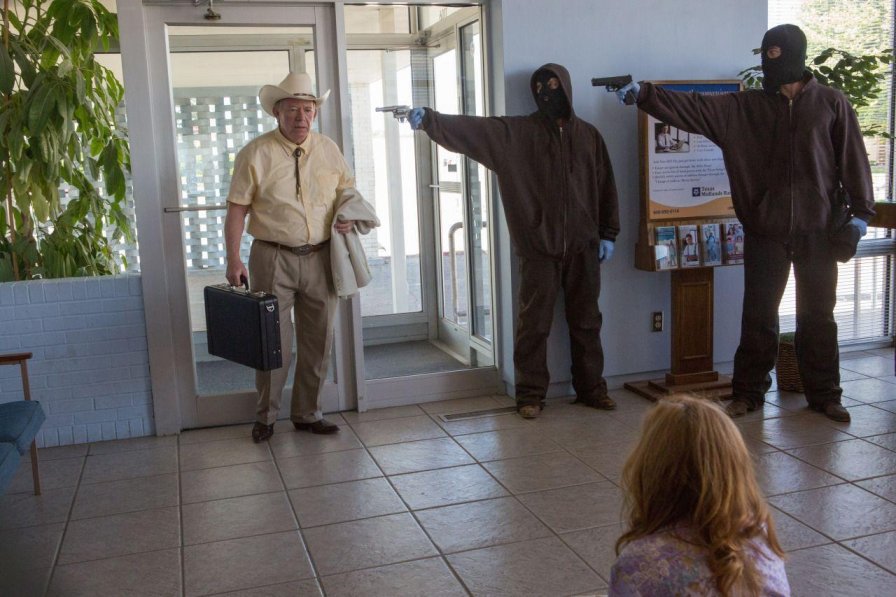
A bona fide barnburner, Hell or High Water never let up. From the initial heist in a dry and desolate town to a staredown between cold-blooded adversaries, nary a minute of our time was wasted. Watching Chris Pine and Ben Foster knock over banks on a mad but noble dash was like watching a pair of manic whirling dervishes with pistols and shotguns. With jolts of violence and gut-ripping humor, the story refused to sit still. Call it an anti-Western, a black comedy, or just a damn fine chase flick, the film insisted on defying categorization and exceeding expectations. Yet as fun as these delinquents were, they had to share the stage with a scene-stealing lawman spitting casual racism and his stoic partner who shoved it right back (Jeff Bridges and Gil Birmingham). There was love there, but there was reality too. Rules of propriety don’t always apply in West Texas. If you needed proof that an explosive and exhilarating action flick doesn’t need a billion-dollar budget or a complete CGI makeover, Hell or High Water was Exhibit A.
14
Elle
Dir. Paul Verhoeven
[SBS]

In a central moment in Elle, Michèle (masterfully played by Isabelle Huppert) removes her rapist’s ski mask to reveal him as her handsome, mild-mannered neighbor, Patrick. Complicating matters, Michèle spends the first half of the film flirting with him and even masturbates while watching him set up a life-sized nativity scene with his wife (one example of the film’s sly wit). After the revelation, she continues to see him, though her motives for doing so remain troublingly opaque. As she discovers, he is incapable of consensual sex with her. “It has to be like before,” he says. Wearing a mask allows Patrick to play a role he can step out of when it no longer suits him, but Michèle cannot easily separate the man she was attracted to from the man who raped her. Like many of Verhoeven’s films, this one was at risk of being dismissed as exploitative pulp, but it raised some crucial questions about the representation of rape on screen. Elle refused to place people into categories: Victimhood doesn’t always eliminate agency or inspire revenge, and too often, monsters wear the faces of neighbors and friends. We contain multitudes, and we carry our monstrosity within us, just waiting to be unmasked.
13
Embrace of the Serpent
Dir. Ciro Guerra
[Oscilloscope Laboratories]

The “white guy going through an intense, eye-opening journey in the jungle” storyline has been done to death, but no matter how sympathetic or well-intentioned, it’s still usually told from the perspective of said white guy, with natives serving as scenery or, at best, “Noble Savages.” With Embrace of the Serpent, Colombian filmmaker Guerra upended the trope, and unlike his Eurocentric precursors, he did so without denying sympathy to the film’s ostensible antagonists. As the guide Karamakate, both Antonio Bolívar Salvador and Nilbio Torres (as the elderly and young version of the character, respectively) infused the film with resilience and fury in the face of imperialism, making for one of the most intriguing, deeply felt characters in recent memory. The film’s turns from grotesque violence to pervasive stillness were jarring, but resembled shifts of scenery in a dream: as with the two explorers who voyage down the Amazon through the film’s dual timelines, one found themselves too deep into the world of the film to not accept its twists.
12
American Honey
Dir. Andrea Arnold
[A24]
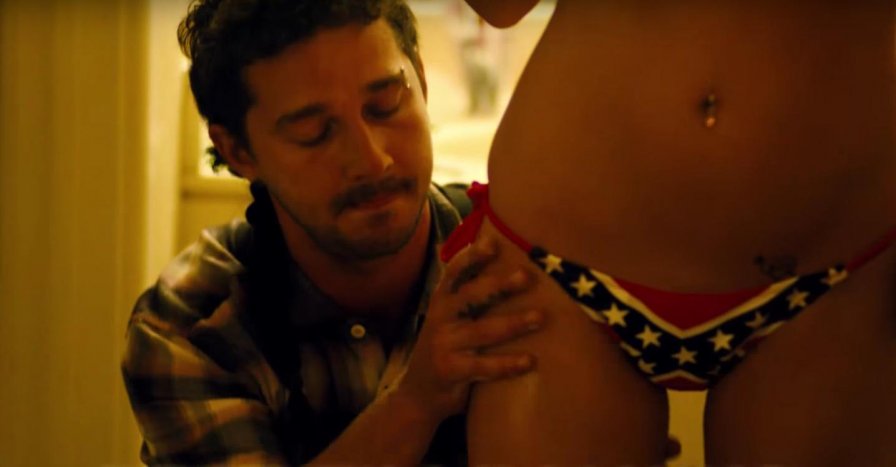
Where would we be without the promise of the fresh start, the open road? Andrea Arnold’s winding, visually resplendent ode to the American Dream positioned us as witnesses to the reckless journey of Star, an 18-year-old Muskogee runaway who finds a new home for herself on a van full of acne-laden misfits, bumping E-40 as they tear across the country selling bullshit magazines. From the moment the film opened with a passing car bearing the bumper sticker “God Is Coming,” American Honey led us on a mythic trek across the Midwestern United States, with trials and temptations and fleeting moments of love folded in between the suburban desolation and languor. Finding a kindred balance between the desert romance of Badlands and the destructive dreaming of Spring Breakers, American Honey unlocked a rare human sympathy: an understanding of our own common indecency, our basest needs to both be wanted and to be free. As Star slowly finds herself tangled up in the same hustle as the rest of us, a wage slave even in the drift of the endless interstate, American Honey revealed the greater pattern of our lives — always leaping from one trap to the next, caught in a moment just as it begins to fade.
11
Zootopia
Dir. Byron Howard, Rich Moore
[Walt Disney]

Zootopia’s real clincher is that it isn’t a perfect allegory. It isn’t a parable either. It’s too complex and too incomplete for either of those. Zootopia itself is too big a place. Zootopia’s narrative whirlwind of convoluted, deeply political stories doesn’t remotely represent Zootopia in its entirety, and its creators know this. Zootopia is messy because Zootopia is messy; its characters, its inhabitants (protagonists and antagonists alike) make snap judgments about those who look or act different, create biological narratives that systematically oppress minorities, deviate from norms, and face persecution while taking intersectionality for granted. Zootopia succeeds not because it depicts triumphs, but because it focuses our imaginations on how inequality structures all of our interactions within our REAL communities. That it explores this in so many complex ways is impressive. That it does so while remaining entertaining and hilarious even more so. That its main characters are a talking bunny rabbit cop and a hustling fox couldn’t matter less.
10
Toni Erdmann
Dir. Maren Ade
[Sony Pictures Classics]

The cliché is true: watching Toni Erdmann, I laughed and I cried. The tale of an oil industry consultant and the uncomfortable adventure she has with her prankster father during a trip to Bucharest, Maren Ade’s third feature is packed with everything: family melodrama, business intrigue, Whitney Houston karaoke, nudity, Austin Powers fake teeth. At heart, though, this sprawling film is about the simple struggle of communicating with the people you are closest to. Folding together the mundane, the grotesque, the high and the low, Toni Erdmann never loses sight of an almost old-fashioned desire to entertain that keeps the film from slowing down, even as it nears the three-hour mark. It is true magic to see a movie that not only takes seriously adult family relationships, the social gymnastics of being a woman in a male-dominated business, and the cultural displacement of the aging, but also manages to land a great fart gag. You can almost hear a Hollywood remake already being developed for Robert De Niro or whoever, but Ade’s epic family comedy is that rarest of works: indulgent and giving in equal measure, an entire universe of feeling that deserves to be cherished.
09
Green Room
Dir. Jeremy Saulnier
[A24]

Jeremy Saulnier’s debut feature Blue Ruin was a year-end-listable beast of a film, but even it couldn’t prepare us for the taut, stately carnage of Green Room. This tense, bloody tale of The Ain’t Rights, a hapless touring band forced to fight their way out of an isolated neo-nazi club, was at once a siege movie to end all siege movies and a love letter to the DIY punk scene. While Anton Yelchin, Imogen Poots, and Alia Shawkat all delivered standout performances, it was Patrick Stewart who stole the show, playing against type as the sinister Darcy, club-proprietor with a velvet voice and ice-cold blood in his veins. Following the results of the 2016 election, the film has taken on a grim new timeliness. A resurgent white nationalist movement has gained new visibility, bolstered by what they see (correctly or incorrectly) as an ally in the White House. Ideas long thought taboo are gaining fresh currency, threatening to infect right-wing policy as a whole. In 2017, we are all The Ain’t Rights. May we fight as bravely and live to see a brighter morning.
08
Wiener-Dog
Dir. Todd Solondz
[Amazon Studios/IFC Films]

A long trail of dog diarrhea, captured in a long, slow-tracking shot, summarized the ethos of Wiener-Dog, in which Todd Solondz turned the nihilistic rage and bitterness up to 11 for another grimacing comedy of human suffering. Solondz’s career seemed to be in a cul de sac circa Palindromes, but then he roared back to life, experimenting with form and somehow cranking up the contrast even further on his particular point of view. The canine connection between the four segments in Weiner-Dog was nicely abstract and got surreal in the film’s “dog around the world” intermission. Name actors got a chance to play in the darkness: Julie Delpy as a mom who damages her son with spiritual misinformation; Greta Gerwig as a grown-up, utterly self-esteemless Dawn Wiener; Danny DeVito as a stand-in for Solondz, a depessed film professor in a losing battle with soulless students; Ellen Burstyn as a defeated woman who doles out cash and rancor to her codependent granddaughter (Zosia Mamet). Solondz still coats his bitter medicine with a sweet shell of playfulness, but his films have lost the goofy baby fat of Welcome to the Dollhouse, revealing the skeletal souls of his guileless perpetrators and agonized victims.
07
Certain Women
Dir. Kelly Reichardt
[IFC Films]
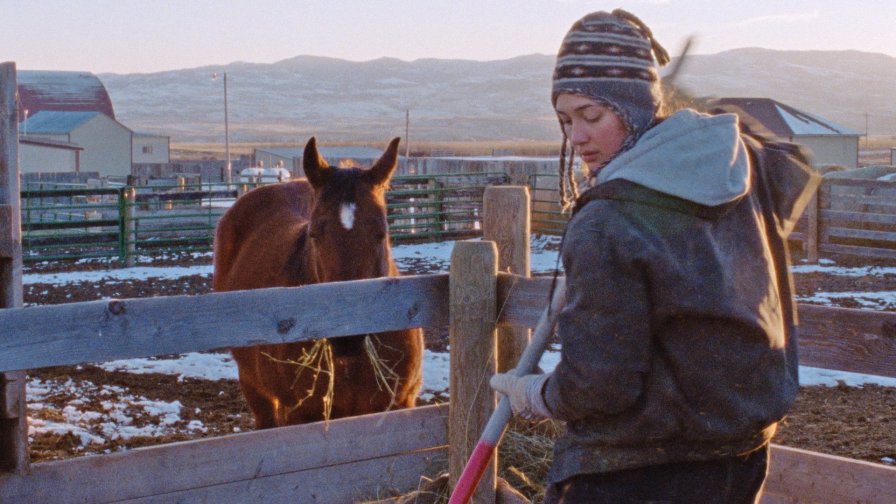
Kelly Reichardt has made a career out of mining the subtleties of life on the fringe of society, her characters’ existences marginalized, if not entirely ignored, by corporate America and failed by both private and governmental institutions. With Certain Women, Reichardt returns to the open plains of Montana that she captured so effectively in her feminist Western, Meek’s Cutoff, which are now sparsely populated by chain restaurants and stores serving only to heighten the sense of economic anxiety dominating a community whose way of life has little worth within our current model of late capitalism. Adapting three Maile Meloy short stories for the screen, Reichardt deals explicitly with resolute females whose unflappable tenacity clashes with the various forces aligned to keep them in check. Laura Dern, Michelle Williams, and Kristen Stewart each exceptionally embody a feminine resiliency and fortitude that acts as a corrective to Hollywood’s singularly musclebound vision of female strength. But it is Lily Gladstone’s breakthrough performance, gracefully conveying a quiet dignity in her nascent desire and emotional isolation against Stewart’s icy demeanor in the film’s final segment, that acts as both a unifying coda and a tender, heartbreaking portrait of unrequited love, elevating Certain Women to the level of something truly special.
06
Everybody Wants Some!!
Dir. Richard Linklater
[Paramount]
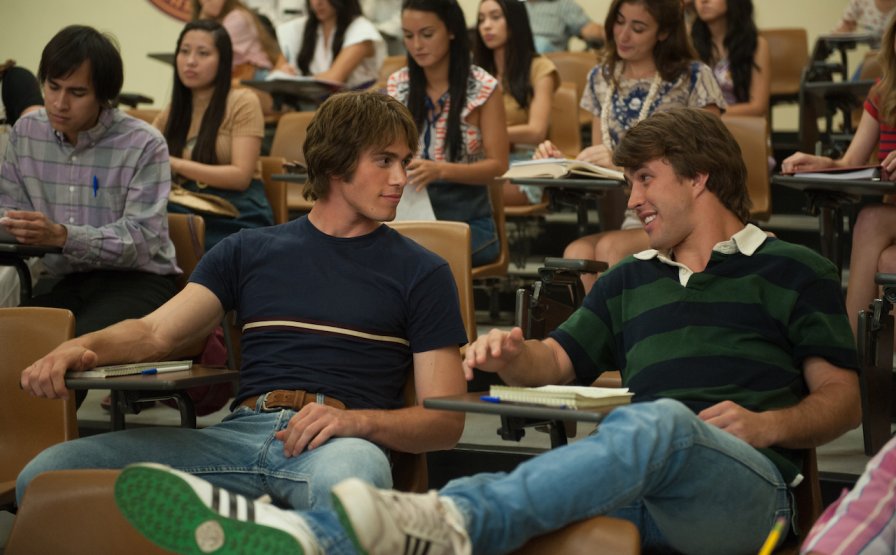
PERSONS attempting to find a motive in this narrative will be latched to the centerfield wall and pelted with horsehides, because jesus, freshman, figure it out. It’s the American Dream as sweet-swing college preen, two (!!) exclamations of wisdom and vulgarity matriculating invincible in the lost weekend before classes or life. Is it possible to slice a fastball in half with an axe? Does it matter if it’s not? No plan, no problem; persons attempting to find a moral will be assailed with unrequested advice that only means as much as the meaningfulness you give it (also, I don’t know: too much of this smells like cat piss). Persons looking for a plot just get pop-up as pop song, a frontier fraternity for Mark Twain and John Belushi. There’s self and passion in the tangents between framework, and there’s a real stereo democracy when every voice gets a verse, from the black to the white, the red to the brown, the purple to the yellow. Everybody Wants Some!!, freshman, but maybe nobody gets any if we don’t play this game the right way. Practice is mandatory. Everyone impacts the outcome. Shake your groove thing. Come for a good time, not for a long time. The rest is F-L-Y.
05
Arrival
Dir. Dennis Villeneuve
[Paramount]

“Abbot is death process.” This four-word sentence alone should be enough for Arrival to earn a place on every critic’s year-end list and at every awards show. It’s amazing on so many levels: (1) screenwriter Eric Heisserer presumably typed that into the script with a straight face; (2) it stayed in the film; (3) in its immediate context, that is, uttered in squid-alien language and translated for us onscreen (in subtitles, if memory serves), its seemingly hokey technicality keeps the film honest to genre, but; (4) it does so while also speaking directly to and illuminating the brainy twist that gives the film its heart and soul. All great sci-fi reveals that the barrier between supposed “high” and “low” art is bullshit; this film arrives at that point with such finesse that you might miss it if you aren’t paying close attention. But then, like the film’s title, this says more about humanity than anything else. “Abbott is death process.”
04
The Handmaiden
Dir. Chan-wook Park
[Magnolia/Amazon Studios]
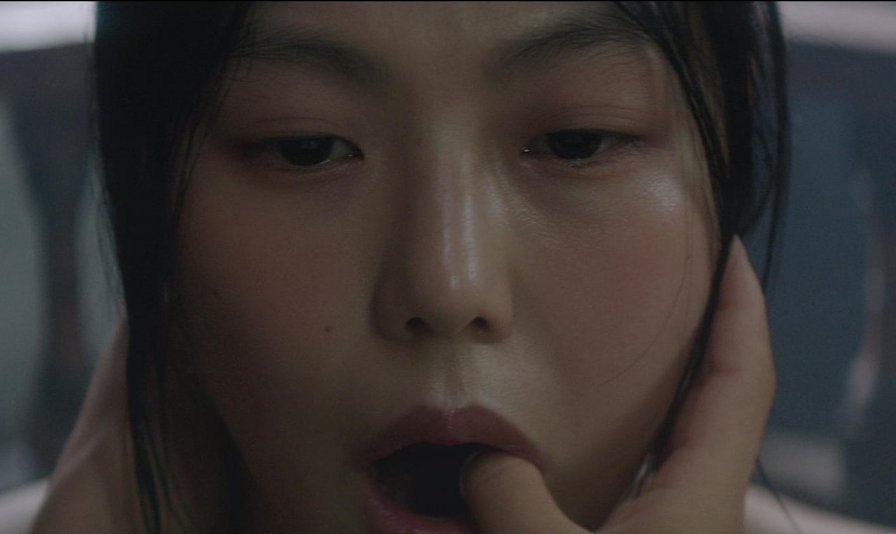
The Handmaiden wasn’t just a daring, prurient thriller. More importantly, this story of two women’s sexual awakening was one of the most tender and moving romances to grace the screen this year or any other. In the beginning, Lady Sideko and Sook-He are separate pawns in a long, twisted con orchestrated by the thief, Count Fujiwara. By the end, the two women have taken control of the narrative and rewritten the ending. The Handmaiden demonstrated the power of stories and imagination, even pornography, to empower and transform our experiences. In one of the film’s central metaphors, an idea gleaned through a pornographic story becomes a catalyst to transformation. Thus, a set of bells, first used as an instrument to abuse the young Lady Sideko, becomes the soundtrack to a joyful erotic coupling. Love, too, performs a kind of magic, allowing inner and outer worlds to collide through the body, in a touch, glance, or embrace. This movie has a lot more to offer than the already slick, glittering veneer it presents. Its undercurrents are far subtler than even most of the positive reviews gave it credit for, and it earned a rightful place in Chan-wook Park’s oeuvre of masterworks.
03
Manchester by the Sea
Dir. Kenneth Lonergan
[Roadside Attractions/Amazon Studios]

Manchester by the Sea imparts a narrative, not so much of family, but of anti-family. Trailers, whispers of the mouth, and other various year-end reviewers could all tell you that the film is a melancholy picture. It has no clear denouement, nor a happy ending, nor is it, of itself, an uplifting experience to be party to. But it is so much more than just a sad story, a simple bildungsroman à clef. A character study of the deeply-wounded men and boys of our past, its immediate shifts in temporality beget a protagonist’s wayward memory and sense of self; it is a detachment and brokenness so profound that it is hard to overcome bearing. It betrays more than its formality, its distinctly New England space-time, and the approaches of its characters, though its mise-en-scène are masterfully clear. Although presenting a rather quaint space, it touches the coward and the stalwart internal and international, beyond the trappings and sentiments of the white working class, beyond those of the outsider. It is a painful portrait, a crying-out of the spirit that never seems to shut off.
02
Moonlight
Dir. Barry Jenkins
[A24]

At this point, is there more to say about Moonlight? In a fractured era, Barry Jenkins’s second feature film received nearly universal acclaim from pretty much everyone who’s seen it (and it’s on this list, which means you should see it). Per some media sources, 2016 was in fact a discordant year that polarized around identity issues of class, race, and sexuality. Jenkins and Tarell Alvin McCraney’s story of a young black boy’s journey into manhood gracefully danced over these topics, as it charged full speed past the obvious labels and stereotypes that might otherwise define Little/Chiron/Black. The destination: a greater understanding of the human threads that not only connect us to other people, but also to ourselves as complex individuals who construct our own identities over the course of our lives. As complete fucking film snobs, we’ve obviously read about the overwhelming reaction viewers had to Francois Truffaut’s classic 1959 coming-of-age film The 400 Blows, but we’ve perhaps never experienced something close or even equivalent to this in our own lifetimes. Thanks for something, 2016.
01
The Witch
Dir. Robert Eggers
[A24]

Plenty of classic films touch upon witches or witchcraft (Häxan, Rosemary’s Baby, Paradise Lost, The Blair Witch Project), but it wasn’t until The Witch hit screens this year that cinema finally had a quintessential film about witchcraft in the early modern period. Writer-director Robert Eggers relied on folklore archetypes and historical documents to craft a film in which a deeply religious family is beset by the dark forces of witchcraft in 17th-century New England.
The film was subtitled “A New England Folktale,” but as Eggers repeatedly stated, period contemporaries would see no difference between the fairy tale world and the real world. They would not consider the idea of witches, curses, and possession fanciful, but instead the very real causes of daily tribulations. So when their crop fails and their youngest disappears while in the care of their oldest (newcomer Anya Taylor-Joy), it’s not a huge leap for the film’s characters to go from blaming a wolf to blaming a witch. From here, you can probably guess what happens next: family trust quickly unravels, crises of faith are had, and increasing paranoia plagues the family until they are (literally) at each other’s throats.
The Witch placed its faith in the pre-existing particulars of the folklore (a goat, a hare, the forest, sabbats), with the hope that none of their terror has been dulled in the last 500 years. And first-time director Eggers succeeded by not only relying on these aspects, but also reinforcing them. Eggers, a veteran of the theater, demonstrated an impressive command of film technique and aesthetics. This was made especially clear during a sequence in which he attempted to imbue the forest with evil intentions, beginning with a few establishing shots (accompanied by the atonal score) of the woods that evoked a foreboding quality. It was followed by a sequence used during the vanishing of baby Sam that implicated the forest in his kidnapping, establishing a shot-reverse shot pattern between Thomasin and Sam as they played peek-a-boo, with the sequence’s final shot of the blankets where Sam lay moments ago, which then pans up to reveal the woods in the distance. It is the camera move itself that damns and points at the woods. (The sequence is so great that its on full display in the film’s trailer). And of course, these are the same woods in which Caleb, the purest soul in the family, finds the hovel of the maiden witch and later where Thomasin, after everything has fallen apart, looks for salvation.
In fact, execution was nearly perfect across the board. The shot composition and framing showed enough to frighten us, but it also left plenty in the shadows so that we had to fill in the blanks with our nightmares. The color palette, aided mostly by natural light, ensured the film looked as bleak as it felt. The performances (and I’m including Black Phillip’s shallow breathing, scene-stealing rearing among them) made us believe it. And director Eggers produced those performances from a young lead in her first credited role, several child actors, and a God-damned goat.
Maybe it was because The Witch was confident enough to avoid deliberate ambiguity or retreating behind a Shyamalan twist. Maybe it was because it’s a feminist parable or an allegory about how society, shouting “Guilty until proven innocent!,” turns us into the monsters it accused us of being. Or maybe The Witch was our favorite film of the year for its ability to weave the disparate strands of a historical film and a genre film into a tight tapestry of folklore and terror that never ripped from the strain. The Witch was not just a great genre movie or an exceptional period piece, but also a nearly flawless film. It was the quintessential witchcraft film we didn’t know we were missing. Sign your name in its book. We did.
Welcome to Screen Week! Join us as we explore the films, TV shows, and video games that kept us staring at screens. More from this series
